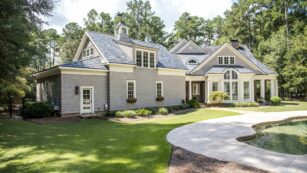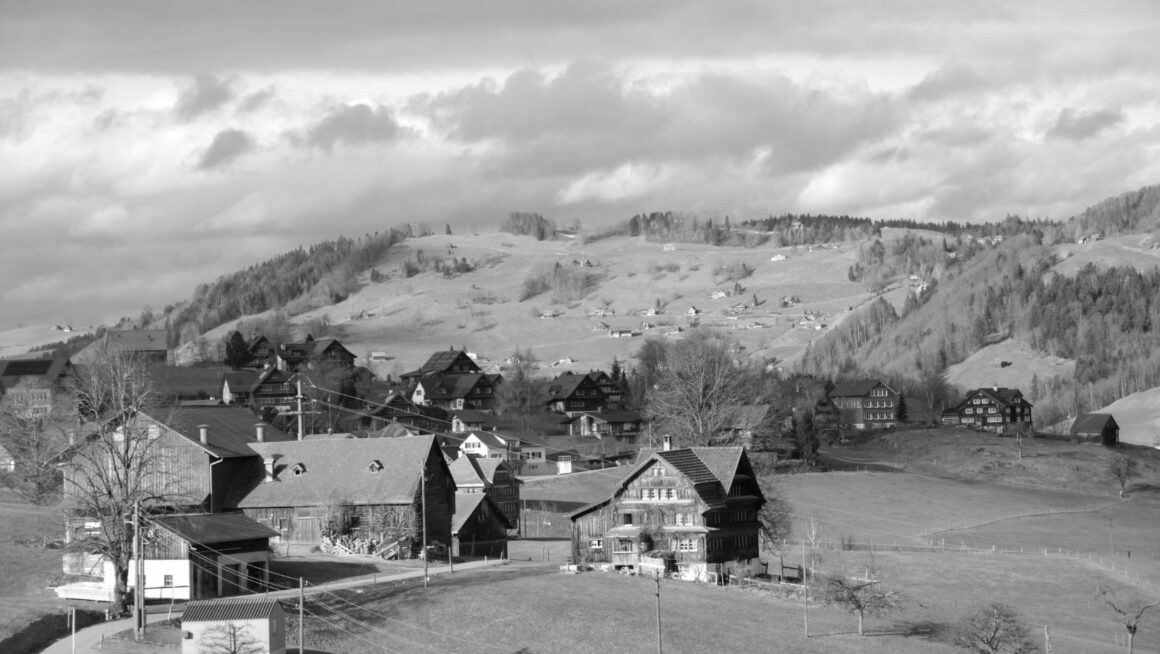The 1950s marked a defining era in American architecture, introducing distinctive house styles that mirrored the optimism and innovation of the post-war period. As soldiers returned home and families expanded, the demand for new housing soared, leading to the development of neighborhoods filled with homes that reflected the era’s unique aesthetic and technological advances.
1950s House Styles
The 1950s marked a revolution in residential architecture with styles that catered to the desires of a burgeoning suburban population. In these designs, functionality melded with minimalistic aesthetics to create an enduring legacy.
Key Characteristics
 1950s house styles are distinguished by several defining features. Ranch-style homes typically have a single-story layout with an open floor plan, connecting the living room, dining room, and kitchen fluidly. Cape Cod houses offer a compact, symmetrical design with a pitched roof and central front door. Mid-Century Modern homes stand out with their emphasis on bringing the outdoors in through large windows and using geometric lines to provide a sleek, progressive feel. The emphasis on horizontal lines in Ranch and the integration of natural light in Mid-Century Modern are central to the architectural aesthetics of the era.
1950s house styles are distinguished by several defining features. Ranch-style homes typically have a single-story layout with an open floor plan, connecting the living room, dining room, and kitchen fluidly. Cape Cod houses offer a compact, symmetrical design with a pitched roof and central front door. Mid-Century Modern homes stand out with their emphasis on bringing the outdoors in through large windows and using geometric lines to provide a sleek, progressive feel. The emphasis on horizontal lines in Ranch and the integration of natural light in Mid-Century Modern are central to the architectural aesthetics of the era.
Common Materials Used
 Materials in the 1950s house styles highlight the innovation of the age. Ranch and Cape Cod homes often incorporate brick or wood sidings, while Mid-Century Modern homes favor the use of novel materials such as steel and concrete. These materials not only defined the architectural character but also ensured durability and facilitated easier maintenance. For interior elements, particularly in Mid-Century Modern homes, designers used a mix of wood, glass, and metal to accentuate the connection between indoor and outdoor spaces, forging a unique blend that is both functional and stylish.
Materials in the 1950s house styles highlight the innovation of the age. Ranch and Cape Cod homes often incorporate brick or wood sidings, while Mid-Century Modern homes favor the use of novel materials such as steel and concrete. These materials not only defined the architectural character but also ensured durability and facilitated easier maintenance. For interior elements, particularly in Mid-Century Modern homes, designers used a mix of wood, glass, and metal to accentuate the connection between indoor and outdoor spaces, forging a unique blend that is both functional and stylish.
Popular Types of 1950s Homes
The 1950s marked a key era in home design, featuring distinctive styles that catered to post-war America’s need for simplicity and functionality. Here, one can explore the architectural details and features of three widely embraced home styles from this period: Ranch, Cape Cod, and Mid-Century Modern.
Ranch Style Homes
 Ranch Style homes, originating in the United States, reflect a fusion of modernist ideas and the American Western period of wide open spaces. These homes are typically single-story with a long, low roofline, large windows, and an attached garage—an ideal layout for suburban family living. Interiors boast an open floor plan to enhance the sense of space and ease of movement. The design promotes a connection with the outdoors, often featuring sliding glass doors that open to a patio. As the predominant choice for many Americans during the 1950s, Ranch homes supported a relaxed, informal lifestyle which continues to be appreciated today.
Ranch Style homes, originating in the United States, reflect a fusion of modernist ideas and the American Western period of wide open spaces. These homes are typically single-story with a long, low roofline, large windows, and an attached garage—an ideal layout for suburban family living. Interiors boast an open floor plan to enhance the sense of space and ease of movement. The design promotes a connection with the outdoors, often featuring sliding glass doors that open to a patio. As the predominant choice for many Americans during the 1950s, Ranch homes supported a relaxed, informal lifestyle which continues to be appreciated today.
Cape Cod Style Homes
 Cape Cod Style homes draw their design from early colonial architecture, characterized by a simple, symmetrical design with a central front door surrounded by multi-pane windows. They typically feature one to one-and-a-half stories with steeply pitched roofs, which include gabled dormers that increase space and provide natural light. These homes are often clad in wood siding or shingles, enhancing their rustic charm. The compact nature of Cape Cod homes provides efficiency in heating and maintenance, making them particularly suitable for colder climates. Their timeless appeal ensures they remain a favorite, embodying a quaint and efficient design aesthetic.
Cape Cod Style homes draw their design from early colonial architecture, characterized by a simple, symmetrical design with a central front door surrounded by multi-pane windows. They typically feature one to one-and-a-half stories with steeply pitched roofs, which include gabled dormers that increase space and provide natural light. These homes are often clad in wood siding or shingles, enhancing their rustic charm. The compact nature of Cape Cod homes provides efficiency in heating and maintenance, making them particularly suitable for colder climates. Their timeless appeal ensures they remain a favorite, embodying a quaint and efficient design aesthetic.
Mid-Century Modern Homes
Mid-Century Modern homes stand out for their unique approach to blending indoor and outdoor spaces—an architectural innovation of the 1950s. These structures often feature flat planes, large glass windows, and open spaces that emphasize a minimalist aesthetic without sacrificing beauty. The integration of natural elements like stone and wood with industrial materials such as glass and steel creates a visually appealing contrast that defines this style. Mid-Century Modern homes often have sliding glass doors that open to integrate the interior with the exterior living areas, promoting a seamless flow that enhances the livability and increases the functional living space. This style remains popular among enthusiasts of architecture who favor clean, uncluttered lines and functional design.

